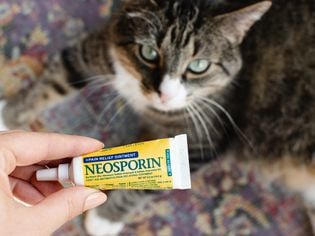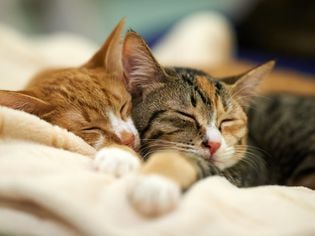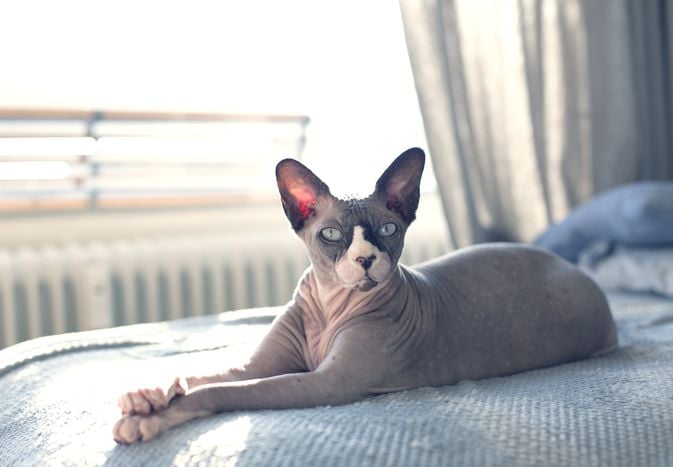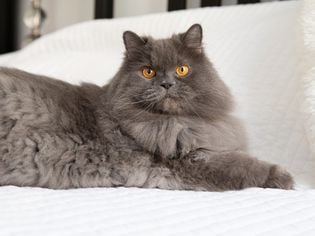Cats are known to have many keen senses. They have acute hearing, eyesight that is wired for motion and darkness, and a highly sensitive sense of smell. Cats' sense of taste, however, is much less intricate than that of humans, dogs, and some other animals.
Cats have little to no ability to taste sweetness but they have a greater ability to detect bitter tastes. The reason for this may come down to evolution. It may also help explain why so many cats seem to be picky eaters.
A Cat's Sense of Taste
Cats are obligate carnivores, meaning they must eat animal products to survive. Their taste buds may have evolved to accommodate their dietary needs (or the other way around). Since cats do not need carbohydrates in their diets, they have no need to detect sweet tastes. Despite tongue similarities with other mammals, cats have a couple of notable differences.
Cats have far fewer taste buds than humans and even dogs. Humans have about 9,000 taste buds and dogs have only around 1,700. However, cats only have about 470 taste buds. It is believed that cats' taste buds are similar to those of humans; the taste buds can detect sweet, sour, bitter, salty, and umami (a savory or even meaty flavor). But while cats' taste buds may technically be able to slightly detect sweetness just like humans can, they lack the sweetness receptor that enables their brains to recognize sweet tastes.
When it comes to bitter tastes, cats seem to have an advantage. Although they have the same number of bitter taste receptors as humans, seven of these seem to have become highly developed. This extra ability to taste bitterness can help cats stay away from toxins in the environment, many of which have a bitter taste.
Despite having fewer taste buds than other animals, cats seem to be able to taste sour, bitter, salty, and umami flavors well enough. This is likely due, in part, to the cat's highly acute sense of smell.
Tastes That Cats Can't Experience
It is scientifically accepted that cats do not experience sweetness the way humans and dogs do because they lack an important taste receptor gene that enables the brain to recognize sweet tastes.
Taste receptors are proteins in the cells of the taste buds that enable the brain to recognize certain flavors. In a study published in 2006, researchers identified the DNA sequences and examined the structures of the 2 known genes Tas1r2 and Tas1r3 that encode the sweet taste receptor heteromer T1R2/T1R3 in other mammals."It was determined that "cat Tas1r3 is an expressed and likely functional receptor, whereas cat Tas1r2 is an unexpressed pseudogene."
What does this mean? Essentially, cats only seem to have one of the two known taste receptors that detect sweetness. In general, cats do not seem to be able to taste or enjoy sweet flavors. Having only one of the two sweet taste receptors may mean that cats can detect some sweetness at very high concentrations, but they are unable to fully experience it in the way humans and many other mammals do.
Foods Cats Prefer
As a rule, cats crave meat and other animal products. Many cats will enjoy snacking on other kinds of foods; they may try to eat your sweet snacks, even if they cannot fully taste the sweetness. In these cases, it is likely the fat that the cat is tasting and craving. Some cats even seem to enjoy certain types of fruit. This just proves the stereotype that cats don't follow the rules!
Even though your cat might want to eat these "out-of-character" foods, it doesn't mean the foods are healthy for cats. Tiny amounts of fruit, dairy products, and non-toxic desserts (i.e. no chocolate) may not be harmful but should be fed sparingly. Even healthy cat treats or scraps of meat and fish should be given with caution. Treats should make up no more than ten to fifteen percent of your cat's diet in order to provide a proper nutrient and calorie balance.
Choose cat food that is rich in animal proteins and low in carbohydrates. All dry food contains more carbohydrates than cats need, so many vets are now recommending feeding all or part wet food to increase protein intake and reduce carbohydrate intake.










Comments on " Which Tastes Can't Cats Experience?" :